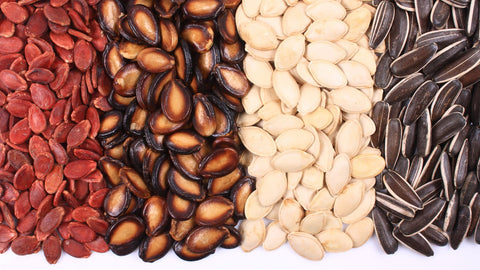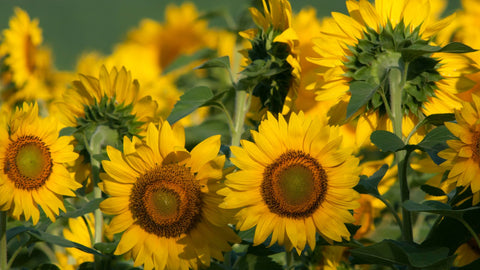A Helpful Guide to Growing the Best Sunflowers From Seed
•Posted on April 12 2024

Sunflowers, with their bright blooms and towering stems, are a quintessential symbol of summer.
Whether you're looking to add a splash of color to your garden or cultivate a cheerful backdrop for outdoor gatherings, growing sunflowers from seed is a rewarding and straightforward endeavor.
In this comprehensive guide, we'll explore everything you need to know about growing sunflowers, including planting techniques, care tips, and the different types of sunflowers you can grow.
Recommended for You:

Planting Sunflower Seeds: Getting Started

How Deep to Plant Sunflower Seeds?
Sunflower seeds should be planted at a depth of 1 to 2 inches in loose, well-draining soil. If planting in rows, space the seeds 6 to 18 inches apart, depending on the variety's mature size.
Where to Plant Sunflowers?
Sunflowers thrive in full sun, so choose a location with at least 6 to 8 hours of direct sunlight per day. Ensure the soil is fertile, loamy, and well-draining for optimal growth.
Related Post: What Are the Best Fertilizers for a Vegetable Garden?
How to Plant Sunflower Seeds in Pots?
To plant sunflower seeds in pots, select a large container with drainage holes and fill it with a well-draining potting mix.
Plant the seeds at the recommended depth, water thoroughly, and place the pot in a sunny location.
When to Plant Sunflower Seeds Outside?
Sunflower seeds can be planted directly into the garden after the last frost date in your area, typically in late spring or early summer.
Soil temperatures should be around 50°F (10°C) or warmer for successful germination.
Related Post: How to Grow the Best Carrots
Growing Sunflowers: Care and Maintenance

How Long Does It Take Sunflower Seeds to Grow?
Sunflowers typically germinate within 7 to 10 days under optimal conditions.
Once established, they grow rapidly and can reach maturity in 70 to 100 days, depending on the variety.
What Are the Different Types of Sunflowers You Can Grow?
There are several types of sunflowers you can grow, each with its unique characteristics and growing requirements:
- Common Sunflower (Helianthus annuus): The classic sunflower variety, known for its large, yellow blooms and towering height.
- Dwarf Sunflower: Compact varieties that are ideal for smaller spaces or container gardening.
- Dune Sunflower: Native to coastal areas, dune sunflowers are drought-tolerant and produce bright yellow flowers.
- Ashy Sunflower: This variety features grayish-green foliage and striking yellow blooms, making it a unique addition to any garden.
Recommended for You:
What is the Best Fertilizer for Sunflowers?
Sunflowers are relatively low-maintenance plants that don't require heavy fertilization.
However, incorporating a balanced fertilizer, such as a 10-10-10 or 5-10-10 blend, into the soil before planting can provide essential nutrients for healthy growth.
Additionally, side-dressing with compost or organic fertilizer during the growing season can help maintain soil fertility.
Recommended for You:

Cultivating Sun-Kissed Beauty in Your Garden

In conclusion, growing sunflowers from seed is a rewarding and straightforward process that allows you to enjoy the beauty of these cheerful blooms in your garden.
By following proper planting techniques, providing adequate sunlight and water, and selecting the right fertilizer, you can cultivate vibrant sunflower seedlings that will brighten your outdoor space with their dazzling display.
Related Post: How to Start a Container Garden
Whether you opt for a towering common sunflower or a compact dwarf variety, the sight of young sunflower plants reaching for the sky is sure to bring joy and delight to any gardener.
So roll up your sleeves, dig in the dirt, and watch as your sunflower seeds transform into magnificent blooms that dance in the summer breeze.
Comments
0 Comments
Leave a Comment